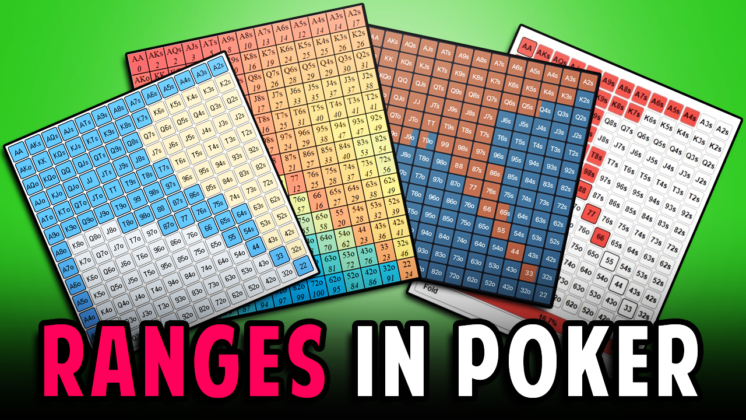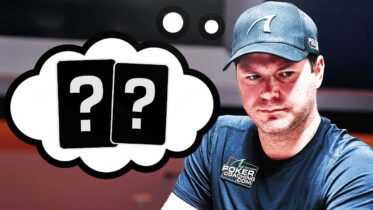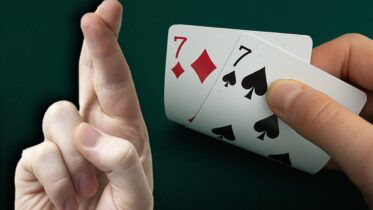The biggest challenge players face when learning how to play poker is figuring out what hand their opponent is holding. While many players focus on guessing the exact two cards their opponent has, poker pros use the concept of poker ranges to play the game more effectively.
Simply put, a poker range is a group of hands a player can have in a given situation, considering the action that led to that spot and all the other factors at play.
Instead of putting your opponent on AK and making that hero call with the bottom pair over and over again, you will need to learn how to think about ranges in poker and determine them more precisely.
If you are just getting started, you have come to the right place, as we will teach you how to approach this area, how to balance your own range, and much more.
What Is a Poker Range?
Very simply put, a poker range is a collection of all hands a player can have in a given situation, considering all the factors that could impact the range.
You will be able to determine players’ poker ranges based on their position, their preflop play, their flop, turn, and river actions, their bet sizes, and sometimes even particular tells.
It is important to realize that each action a player takes helps narrow their range down and tells us a story about the possible hands they can have.
Did your opponent call a huge isolation raise before the flop? Chances are 93 offsuit is not in their range unless they are a complete calling station, which would be another element helping you determine a range.
As the hand goes on and players take more action, you should be able to continue narrowing their possible holdings down until you are left with only a handful of potential hands by the river.
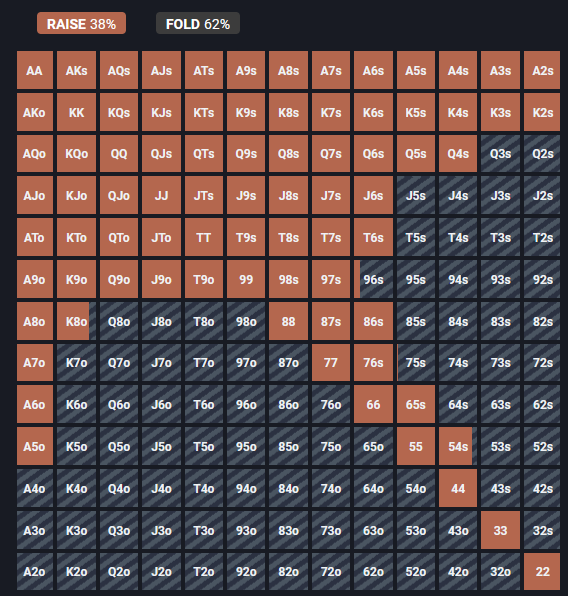
Preflop charts like the ones found on PokerCoaching.com can help you know the
proper ranges to use when playing in poker tournaments and cash games.
Visualizing a Poker Range – Hand Grid and Percentages
The hand grid is one of the most popular tools we use when analyzing poker hands. The grid is made up of all the possible card combinations, with the upper part representing suited hands and the lower part representing offsuit hands and pocket pairs shown on the diagonal line across the grid.
When looking at poker ranges, using the hand grid will be the easiest way to visualize a player’s range, remove hands according to the ongoing action, and figure out which hands you could actually be up against.
You will not have a hand grid open when you play poker, but using various while studying GTO poker will help you visualize it in your head, even while actually playing the game.
Another way to display a player’s range is as a percentage of all possible hands. For instance, a 15% range will be made up of the top 15% of all hands in poker, although this number can be misleading.
If properly constructed, a poker range will be made up of strong hands and bluffs, which means there could be hands in it that don’t belong to the top x% of all hands on the grid.
That said, depending on the player and the position they are playing for, you should be able to determine the % of hands they are playing in a given hand with a reasonable success rate.
Determining Preflop Poker Ranges
The process of putting a player on a particular range starts before the flop, the moment they put their first chip into the pot.
When the cards are dealt, everyone is working with a 100% range, but in most cases, players who enter a pot without being forced to will not have 100% of all hands.
A number of factors can help you put a player on a particular group of hands before the flop. Just a few things to consider:
- Player profile
- Position
- Their actions
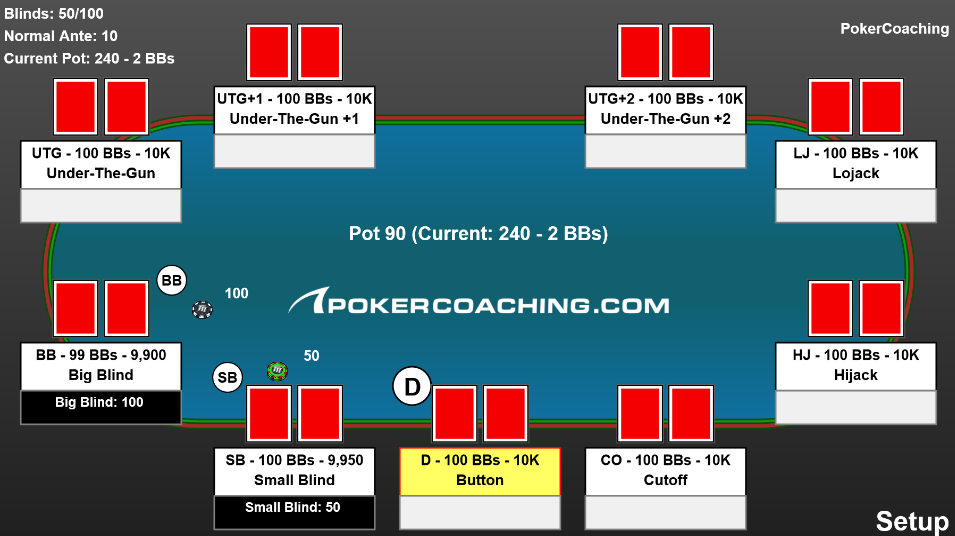
The above diagram displays the names of each position in a 9-handed poker game.
A player opening to 3x from an early position will certainly tell us something about their range, although it can differ quite a bit from one player to the next.
For the most part, serious poker players play similar starting hands, as game theory optimal opening ranges have been calculated, and steering too far away from them is generally not a good idea.
However, it is important to keep in mind that many players don’t actually know what hand ranges they should be opening or calling with from various positions, which will force us to make some guesses.
At the end of the preflop betting round, you should be in a position where you have an approximation of each remaining player’s range, which will still be fairly wide in most cases, especially in single raised pots.If you are not sure about what ranges players might be starting with, here is a quick table that demonstrates the most common opening % from each table position in a full-ring game from someone adopting a solid poker strategy:
| STARTING POSITION | COMMON RAISE FIRST IN RANGES |
| UTG | 8% |
| UTG+1 | 10% |
| UTG+2 | 12% |
| LJ | 15% |
| HJ | 22% |
| CO | 28% |
| BTN | 45% |
| SB | 65% |
| BB | Can’t RFI |
How to Narrow Down Your Opponent’s Range
Once the flop is dealt out, the real ranging process can begin, as you can start removing hands from players’ ranges and narrowing them down.
Narrowing down a player’s likely holdings is an art that requires you to pay close attention to what’s happening at the table.
Each action on each of the three postflop betting streets will give you new information about your opponent’s hand, which you can use to narrow down their range.
As you move into the later betting streets, you can ask yourself a variety of questions that will help you determine which hands they still can and can’t have in their range.
Some of these questions can be:
- Would my opponent c-bet this board texture if they missed completely?
- Would my opponent check this flop with a flush draw?
- Which hands would my opponent bet small with on the flop?
- Did the turn card improve my opponent’s hand?
- Am I playing against a very tight opponent?
- Is my opponent a calling station?
- Does my opponent like to pull big bluffs?
Each of these questions can help you make educated guesses about your opponent’s range and take certain hands out of it altogether. Keep practicing these skills, and make sure to always ask yourself as many questions about your opponent as you can before making any decisions.
Over time, you will become so good at putting players on ranges that you will make very few mistakes, and your decisions will become a lot easier and more profitable.
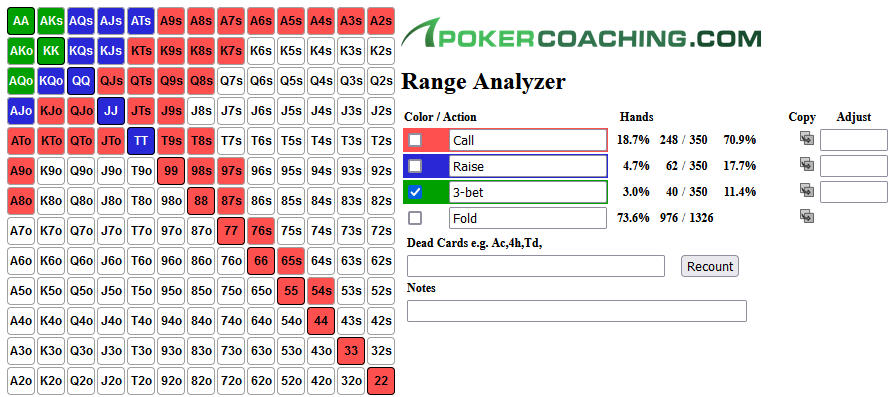
Tools like the FREE Range Analyzer on PokerCoaching.com
can help you better study poker ranges.
Balancing Your Poker Ranges
While identifying the poker ranges of other players at the table is an essential part of any good poker strategy, the very best players out there are also aware of their range, and they build it in a balanced way that does not allow their opponents to exploit them.
Balancing it out is a difficult process that starts before the flop and continues through every betting round in the hand.
Including enough bluffing hands in your preflop raising and 3-betting ranges is the first part, but it is important to remain balanced throughout the hand.
Many players will bluff way too often or too rarely after the flop, making their strategy easily exploitable by opponents who are paying attention.
On the other hand, a well-balanced strategy will strive to always include just the right amount of bluffs for every bet size and always keep the opponents guessing.
Keep in mind that playing a perfectly balanced strategy is impossible for humans, but learning from poker solvers and trying to mimic their level of balance will make you a nearly unbeatable player at the poker table.
Final Words on Poker Ranges
Thinking about poker in terms of ranges instead of particular hands is one of the hardest skills to master in poker, so don’t worry if you aren’t quite there just yet.
The most important thing you should do is always come back to your sessions after you play them, analyze your hands, and always try to consider your opponent’s and your possible ranges in honest and realistic ways.
Fortunately, there are quite a few poker tools out there that will help you visualize and compare them, which is definitely the best way to practice ranging your opponents and calculating your equity against particular ranges.
If you start working with these tools today, we can promise you that in a few months, you will become a much better poker player and will learn to think about the game in a whole new way.
